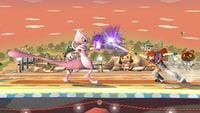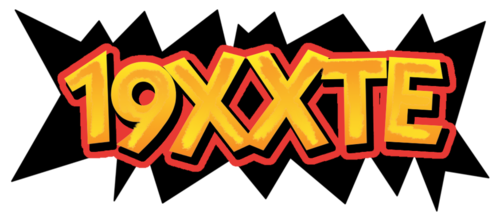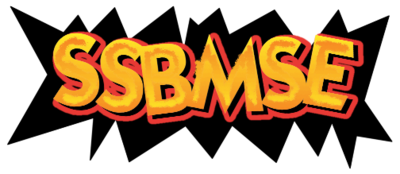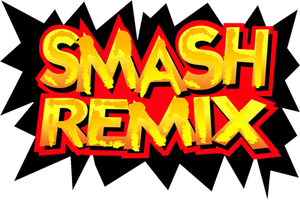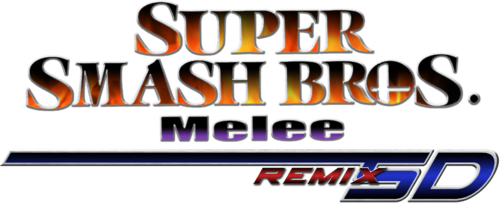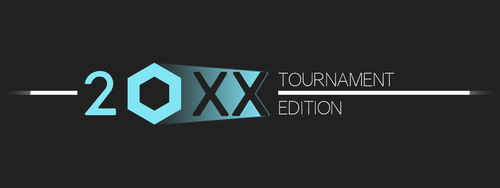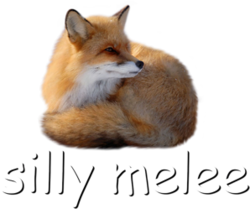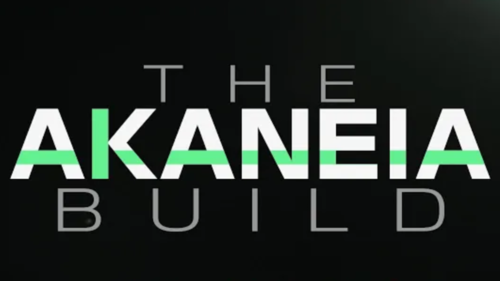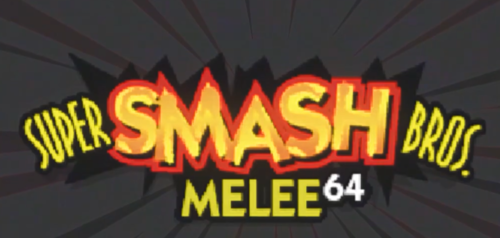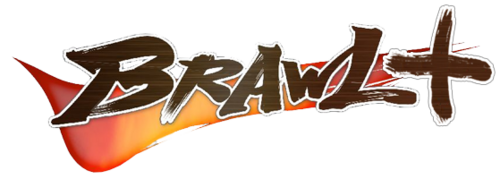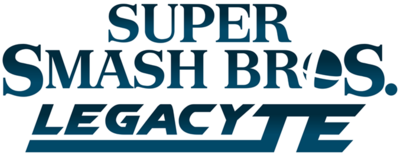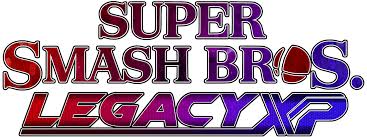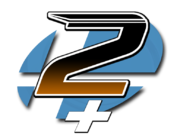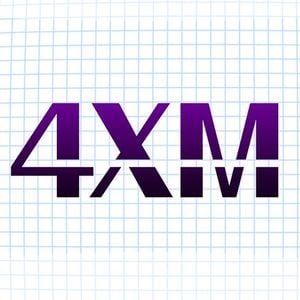Gameplay modification
Gameplay modification, often shorthanded as mod, is a blanket term for unofficial hacks and code alterations that change one or more aspects of the original, or "vanilla" version of a game. The term "vanilla" comes from a common terminology featured in the computing world. Mods range from cosmetic changes to engine and gameplay overhauls that result in the game functioning completely differently. The first attempts at modding involved Brawl, with such projects generally being viewed as novelties, palette swaps for characters and UI changes. Outside of this, forcing the Wii to load such mods was considered difficult, requiring use of the now-inoperable Twilight hack. The increasing complexity of game play mods and the discovery of the Smash Stack exploit, however, caused mods to develop considerably more attention with observers.
Brawl remains the most commonly modded game in the series, primarily utilizing the Smash Stack exploit, though alternate methods for loading them are available. Mods for Melee often require the use of applications available for The Homebrew Channel. 19XXTE, a gameplay mod for Smash 64, requires patching a ROM image of the game. Mods for both versions of SSB4 involve the use of kernel exploit chains on their respective consoles primarily using Layered File System (LayeredFS) patchers to overwrite parts of the game's filesystem. Mods for Ultimate require a Switch console released before July 2018 to utilize a recovery mode exploit left over from the development phase of the console, enabling the use of code hooking and file replacement via the Skyline executable patch.
Overview
Specific changes to the game depend on the preferences of the developers, as well as their ultimate goal. There are a few different categories most mods fall into:
- Balance mods don't change the core gameplay and apply buffs and nerf to characters to reduce competitive inequality between characters.
- Overpowered mods give every character huge buffs so that they are all equally overpowered.
- Melee-inspired mods change the gameplay and movesets to be more fast-paced and technical like in Melee, sometimes adding mechanics such as wavedashing.
- Competitive mods don't change anything gameplay-wise, but add features for players to practice their skill and/or improvements for tournament play, such as quality of life changes.
- New character mods try to bring new characters into the game with new 3D models, animations and movesets, either replacing characters or being a new addition.
- Skin Mods bring new Alternate Costumes to characters using File Replacement.
- Silly Mods change characters or game mechanics in certain ways to result in humorous outcomes, like modifying Ganondorf's moves to stretch. Often times said silly mods fall into the Overpowered category.
Due to the Smash Stack exploit and relative ease of hacking the Wii compared to other consoles, alongside the popularity of Project M, modifications for Brawl are considerably more widespread than for any other game in the series.
Stages
In addition to raw gameplay, other portions of the game may be overhauled by developers to further change gameplay. The changing of stages is among the more common ways to do this:
In Brawl
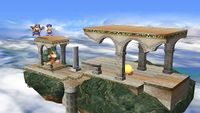
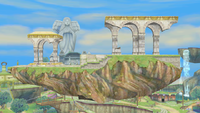
Brawl is the most commonly modded game in the series due to Smash Stack exploit, which makes modding the game much easier to the average player. In these mods, it is common to new stages, often replacing others, that have been made by fans. It is also possible to use newly created slots on the stage selection screen or alternative stages that load when holding a specific button when selecting a stage.
Brawl- and Project M, for instance, replace the ordinarily over-sized Temple with a smaller, more condensed version. Stages with transformations like Castle Siege or Pokémon Stadium are often changed to stay at the most competitive form of the stage. Outside of this, unpopular stages might be entirely replaced with others, such as how Project M replaces the highly non-standard Mario Bros. with a rendition of Fountain of Dreams from Melee.
Legacy TE added stages with the design of stages used for competitive play for each stage, using their theme in background models and textures and playing the same background music, that load when holding the Start, L, or Z button. Legacy XP added over 700 new stages into the game using new slots on the selection screen, as well as variants when holding down specific buttons. Button Shortcuts to quickly select popular Project M stages have also been added. Smash 2 added all stages that were in Melee' back into the game. Outside of stage layout changes, some textures and tracks may be replaced, particularly in the case of original stages.
In Melee
While one of the less popular entries in the series for mods, some have been created over the years. SD Remix, released in 2015, features 3 pages of stages: One for the vanilla stages, one with 1-player mode-only stages, and one for newly created stages, with some inspired from other games.
In 64
19XX modifies the stage selection screen to contain otherwise unplayable in versus mode stages Battlefield, Final Destination, and Meta Crystal. 19XXTE 's selection screen contains 11 instead of the original 9 slots for stages, and 19XXCE has 16 slots.
In 2018, modders found a way to change stages, first only replacing Hyrule Castle, but later it became possible to replace all stages. The mod SSBMSE replaces most stages in the game with more competitive stages modeled after their appearance in other Smash games.
Smash Remix is the most recent mod, and in Patch 0.9.5 it includes 4 pages of stages from newer Smash Games and Brand New Custom Stages.
In Smash 4
Creating new stages is possible in Super Smash Bros. for Wii U.
In Ultimate
Creating new stages is possible in Ultimate, though stage collisions have new properties that cannot currently be edited by the Smash 4 stage collision editor.
Gameplay adjustments
Gameplay adjustments for the games are intended to, as their name implies, adjust how the actual gameplay works. Character movesets or even the core engine might be changed, techniques might be removed, altered or newly added.
Animations/models
In Brawl
For Brawl, the tool BrawlBox easily allows modders to replace models and animations. Brawl mods usually feature a lot of new custom models and animations.
In Melee
For Melee, editing animations or models is very limited and rarely done.
In 2017, the Smash 4 modding tool Smash Forge became compatible with Melee, making it possible import new models over models over Melee characters [1]. Some small mods that replace a costume of a character have been created, for example, a Ryu model import over Captain Falcon [2].
In SD Remix, a few characters got different animations for some moves, reusing animations from different moves; for example, Pichu used its roll animation for its Dash attack [3], and Bowser, his aerial item down-throw for his Down aerial [4]. In March 2019, the first custom animation on a Melee character happened: Falco got his Forward Air imported from Ultimate [5]
In 64
For Smash 64, editing animations or models is also very limited. In 2019, Smash Remix became the first mod with these features: A Ganondorf model replacing Captain Falcon got newly created animations for his smash attacks, where he uses a trident weapon.
In Smash 4
For Smash 4, there is a tool called Smash Forge for changing models and animations [6]. Mods replacing Fox with Wolf [7] and Dr. Mario with one of the Ice Climbers [8] from their Brawl appearances have been created.
In Ultimate
For Ultimate, there is a tool called StudioSB, which allows for model imports and animation imports. Add-ons for Blender were also made to edit some animation/model files. Material edits are done via ParamXML or CrossMod, to change properties like how metallic or bright an object appears. Brawlbox is also compatible with Ultimate animations & models.
Adding new characters
In 2013, the addition of characters has become a possibility for Brawl mods. Project M notably added Roy and Mewtwo as playable characters in version 3.0 after the absence of the duo in Brawl.
In 2015, a build called Project M Ex was created, mainly by hacker PyotrLuzhin/Петр Лужин, that worked as template for builds to easily add new slots for characters. It included all characters present in Project M, as well as Ridley. All future builds that were based on Project M (Legacy XP, Smash 2) and added new characters are based on this template, and mods like Brawl- switched to this template reimplementing their changes.
Brawl- added Pichu, Roy, Mewtwo, and newcomer Waluigi to the game. Newer mods based on Project M like Legacy XP add even more characters, that might have never been playable, into the game with completely original movesets.
As of version 1.0.0 of Smash Remix, a Smash 64 mod, 13 characters have been added in addition to the original 12: Ganondorf, Young Link, Falco, Dr. Mario, Dark Samus, Wario (the first to have a completely original moveset), Lucas, Bowser, Mad Piano, Wolf, Conker, Mewtwo and Marth. Giga Bowser has also been added as a somewhat overpowered playable character.
Adding new characters to Ultimate recently became possible. The mod Super Smash Bros. Ultimate: Championship Edition added Akuma from the Street Fighter series in its version 1.00 update released on July 1st 2021, with entirely unique moves and Final Smashes.
Notable gameplay mods
Super Smash Bros.
19XX
Main article: 19XX
19XXTE (Tournament edition) is the first and most notable of gameplay mods involving Smash 64. Similar to the concurrently developed 20XX, 19XXTE is intended to assist players in training their skills for professional play in Smash 64, as well as adding various improvements for tournament play, such as a Match timer, and allowing for access to the ordinarily unplayable stages Duel Zone, Final Destination, Meta Crystal and cloudless Yoshi's Island. The mod has notably seen use in most Smash 64 tournaments since Hitstun 3 in late 2015, including GENESIS 3, the first tournament with over 200 participants.
19XXGE (Genesis edition) is more or less identical to 19XXTE and got its name from being designed for the GENESIS series.
19XXCE (Complete edition) has more content, such as a bigger stage selection screen including all 1P only and unplayable test stages, and an enhanced training mode with options for hitbox display, color overlays, flashes on Z-cancel, the option to set the percentages, and more.
SSBMSE
SSBMSE (More Stage edition) [9] is a modification with the goal to add more tournament-viable stages to the game. Version 0.3 was released in April 2019, and features Kalos Pokémon League, Smashville, non-transforming Pokémon Stadium, and Final Destination, in addition to Dream Land, Yoshi's Island, Battlefield, Final Destination, and Meta Crystal. Since it was merged into Smash Remix, it won't be developed any further.
Smash Remix
Smash Remix is a mod with the goal to expand Smash 64 with new characters, stages, etc. while staying true to its core gameplay. New mechanics from the other Smash games, like wavedashing, are not added. The vision involves having tournaments where the new characters are pitched against the old ones, all the clones being viable against the originals.
In May 2019, the first version, entitled 0.5, was released, which replaced Captain Falcon's model and moveset with Ganondorf, mostly based on his Melee appearence. In later versions, he got decloned and received completely new smash attacks based on his ones introduced in Ultimate where he uses a trident weapon resembling Phantom Ganon's weapon in Ocarina of Time rather than the sword from the Spaceworld 2000 demo. He also gained a unique series icon, being a cracked and broken Triforce. In versions 0.7, 0.8.1 & 0.8.2, Young Link replacing Link, Falco replacing Fox, and Dr. Mario replacing Mario were added. Notable differences from their Melee counterparts, where their cloned moveset was mostly based off, are Young Link using his roll from the Zelda series as a dash attack, Falco not having lasers and instead using Falco Phantasm as his neutral special, and Dr. Mario's down aerial being a strong spike like in Ultimate instead of a drill attack. He also later gained his own series icon, being a Megavitamin. All the newcomers received their own victory screen themes as well.
In version 0.8.2, released in August 2019, it became possible to add new stages instead of replacing old ones like in previous releases. For example, in version 0.8, a new stage based on Ganon's castle in Ocarina of Time became the first new stage in this mod, replacing Hyrule Temple. New stages are for example taken from the SSBMSE mod, which was merged with Smash Remix in version 0.8.2.
In version 0.9, released in October 2019, the new characters no longer replaced older characters, and it was finally possible to play with each of the original 12 characters and the 4 new characters, expanding the character selection screen to 16 characters. Version 0.9.1, released on Christmas Eve 2019, adds Dark Samus as a playable character who shares their gameplay from how it is in Ultimate, but also gains some new moves that resemble the ones Dark Samus had as an Assist Trophy in Smash 4. Eight more stages were added as well. In addition, it also incorporates all features from 19XXCE, such as Neutral Spawns and Hazard Toggle. Additionally Wario was teased for a future update.
Version 0.9.2, releasing March 15th, 2020, follows through on this with the addition of Wario as the first unique newcomer to the game, and while most of his normals are similar to Brawl's take on the character, he has different smash attacks, specials (except Corkscrew), and a new down air, in addition to having a custom stage entrance in which he crash lands with his plane, the Bulldog. Overall, Wario more so represents the Wario Land series in this mod over the main series which focuses more on the WarioWare series. Originally, he used the Mario series icon rather than his usual "W" symbol, likely due to Wario Land not being established as its own "series" at the release of vanilla Smash 64, however this was changed back to the "W" symbol in 0.9.7. It also added more stages, support for more stage features like hazards and moving platforms, framerate optimizations for various stages, gameplay variants of the original 12 such as regional variants, polygon team, Metal Mario and Giant DK, and full 1P mode accessability for the new cast, with new Break the Targets stages for them to complete. It also added changeable music for stages, with the option to choose a specific song or by random with each track having a different rarity of playing on its stage.
On April 1st, 2020, the Mad Piano from Super Mario 64 was “revealed” under the guise of version 1.0.0 as an April Fools’ joke. Because of this, version 1.0.0 and the Mad Piano were not released. However it was then officially added in version 0.9.5 sharing a slot with Luigi.
Version 0.9.3 was released on May 12th, 2020; adding Lucas as a playable character with him mostly retaining his gameplay from the regular series. However, he rides in on the Pork Bean rather than the Coffee Table during his stage intro and he uses Ness's up aerial from Ultimate. PK Fire also replaces PK Freeze as his neutral special, similarly to Ness's situation in this game, due to 64 lacking unique side specials, as well as the frozen status effect. The update also added more regional variants for the original cast, more stages (such as one for Lucas that takes place in New Pork City, and a "Smashketball" stage based on a popular Custom Stage concept players make, with the goal being to KO fighters by launching them into a Barrel Cannon that sends them directly downwards), more music for already existing stages, and unique Board the Platforms stages for most of the mod's newcomers. It also added more miscellaneous options, such as the ability to switch the menu music between Smash 64, Melee, and Brawl's versions.
Version 0.9.4 was released on September 6th, 2020, and saw the addition of Bowser. His moveset consists of moves he had in Melee, in addition to a few new ones such as a sex kick neutral aerial, a jab combo ending with a bite, and a new fire-breathing up aerial. His forward throw was changed to be like the Flying Slam. His running animation, back aerial, and other attributes also more closely resemble how they've been since Smash 4. Giga Bowser was also added, selectable underneath Bowser's slot in the same fashion as Metal Mario, Giant DK, and the Fighting Polygons under their respective characters. Like his Project M version and Dr. Mario in this mod, Bowser also has his own series icon rather than a Super Mushroom, that being the iconic logo of his face, using its design from Super Mario 64, as opposed to the design used since Mario Kart: Double Dash!! like in PM (although the modern design is used for his damage meter). His intro also differs from the main series, being him riding in on his Clown Car. His skeletal form when getting hit by electric attacks also resembles Dry Bowser. Version 0.9.4 also adds new stages such as Bowser's Keep from Super Mario RPG, Goomba's Road from Paper Mario, and World 1-1 from Super Mario Bros., which is a scrolling stage similar to Mushroomy Kingdom; as well as Dream Land and Ω forms of the original 9 stages, Race to the Finish as a standalone mode akin to Break the Targets and Board the Platforms, Multi-Man Mode, Cruel Multi-Man Mode, and a 12 Character Battle Versus Mode that has a similar idea to Squad Strike and Smashdown as new game modes. Newcomers to the mod who still didn't have their own Board the Platforms stage gained one, including a unique one for the Polygon variants of the roster.
Version 0.9.5 was released on December 6th, 2020 and was the first major update to not have a newcomer with their own slot; however, the Mad Piano was officially added just like in the April Fools' teaser, selectable under Luigi's slot like the other "boss" characters of the game. The update added transformation items which are brand new to Smash 64, being the Super Mushroom, Poison Mushroom, and Cloaking Device. It also added Kirby Hats for the mod's newcomers.
Version 0.9.6 was never released individually and was cancelled and merged into the next build.
Version 0.9.7 was released on May 10th, 2021 and added Wolf O'Donnell as a newcomer, who mostly retains his gameplay from the core series, though his up special is Wolf Flash rather than Fire Wolf. He has an unique appearance based off his design in Starfox 64 with some liberties such as wearing short sleeves and no gloves. Wolf also has a unique victory theme that comes from the theme for Star Wolf. Conker the Squirrel was also added, who is the first non-boss newcomer to the mod who has not appeared in the main series. Conker's personality, appearance, and moveset are based off specifically Bad Fur Day. He uses several weapons from the game such as his frying pan and slingshot, alongside the chainsaw, flamethrower, bat, katana, and grenades. Conker's taunt involves him waving off the opponent and yelling "See ya!" with a grin. His series and stock icons are an extra tail, his intro is him being dropped in by Gregg's hand, and his victory theme is an excerpt from the Windy theme. Additionally, Wario now uses his own series symbol like in the main series rather than using the Mario series symbol and his home stage, Kitchen Island was entirely redesigned. As for stages; Venom from Melee was introduced alongside brand new stages from various Nintendo 64 titles being Jet Force Gemini, Perfect Dark, Conker's Bad Fur Day, and Mischief Makers. A "Remix Modes" selection was also added with the Multi-Man Modes and a new version of Classic Mode that stars the mod's newcomers and has increased difficulty, randomized bonus stages, and most stages have a random opponent as opposed to the same set every time. Lastly, additional customization options were added for Versus Mode that's comparable to Special Smash but with having the ability to pick specific settings for each participant. It includes being able to select the fighters' sizes before the match, let them always appear silhouetted, cloaked or as a skeleton, and even being able to set random knockback.
Skipping a couple individual builds, Version 1.0.0 was released on September 19th, 2021 and added Mewtwo and Marth as newcomers, filling out the character select screen. Both very closely replicate their gameplay and animations from the main series with the only notable differences being that Mewtwo has a unique victory theme based on the music that plays in Cerulean Cave and Marth's Dancing Blade replaces Shield Breaker as his neutral special. New stages added include "GameBoy Land", a stage that brings the fighters through various titles of the console (comparable to Dream Land GB); Jungle Japes; Yoshi's Island II; and Castle Siege. Delfino Plaza received a complete overhaul, and new variations of Dream Land, Duel Zone, Final Destination, and Cool, Cool Mountain were also included. All-Star Mode was added as a new 1P Mode. Other features included were the ability to change shield color, adjust frame delay, and a song display that appears onscreen at the start of a match telling what song is currently playing. Lastly, new alternate costumes were given to the cast of the original game.
Additionally, the mod has received smaller updates in between the major version changes that typically just fix bugs and are distinguished by placing a lowercase letter after the version number, starting with "a" and moving onwards alphabetically; for example, version 0.9.3c being the third update to 0.9.3 and fixing glitches regarding Jigglypuff's jump height, the combo meter not counting certain moves, and warping in the new bonus stages added amongst other issues.
Super Smash Bros. Melee
Melee: SD Remix
Main article: Melee: SD Remix
Melee: SD Remix is the first of notable of hacks involving Melee. SD Remix holds some niche appeal amongst some devoted Melee players. The concept behind Melee: SD Remix can be compared to that of Balanced Brawl; both mods avoid making changes to the game's base engine in favour of buffing and nerfing individual attributes of characters to make the game more balanced. Some stages have also been altered as to allow for better competitive gameplay. The development for SD Remix continues today, but appears to have slowed down, with the last version being from 2015.
As of July 5, 2015, a version loadable from a memory card, entitled SD Remix Lite, was released; it is also the only memory card mod that can run with full features on all versions of Melee, including NTSC/NTSC-J 1.00, 1.01, 1.02, and PAL, and even though it is named version 3.2, it still contains all fixes of SD Remix Full 3.2.1.
20XX
Main article: 20XX
The 20XX Melee Training Hack Pack does not feature any true modifications to Melee's gameplay; rather, as its name suggests, it modifies Melee's overall user interface to allow players to train their skills for professional Melee tournaments. Hacks, for instance, can allow players to flash differing colours to allow for practising of L-cancelling or allow for players to view hitbox data for the game's various characters. Other, minor hacks are also available, allowing for players to modify stages, use PAL versions of characters, or use unique costumes.
An extension of the 20XX Melee Training Hack Pack is the 20XX Tournament Edition. Developed by professional Melee player Dan Salvato, 20XX Tournament Edition features various hacks to streamline the mod's performance in tournament use, as well as other minor improvements, such as widescreen support; it also uniquely runs via hacked save data on a GameCube memory card, allowing for it to be spread through the standard software found on either the GameCube or Wii.
Silly Melee
Silly Melee [10] is a modification of Melee with the purpose of making every character overpowered. Made by Alpharad and MagicScrumpy with assistance from Casey O'Rourke, it is self-described on its official website as "Very, very silly. Characters do things that they never should have been able to do." Version 1.0 was released in December 2015.
The Akaneia Build
First releasing on January 20th, 2021, The Akaneia Build is a major mod that is comparable to that of Smash Remix for the first entry in the series, albeit for Melee instead; as it too takes advantage of being able to add content to the original game without replacing any, which was a brand new discovery for Melee upon its creation. It also features online play, using an already existing netcode mod. Also like Remix, the mod focuses heavily on the competitive side of things while also being fully accessible to more casual play.
The mod first released with adding back in all stages from Smash 64 that weren't already present in the base game, including Metal Cavern. A brand new stage added was a volleyball court, which also became a new game mode complete with scoring. It also added various new alt costumes for the roster, many of which were based on color swaps added in later games of the series such as Mario's pink and cyan alt, the white alt for Mr. Game and Watch, and yellow color swaps for Fox and Link. Some costumes were new such as Pichu wearing the hat and backpack of the male trainer from Pokémon Gold and Silver. A small update was shortly released after adding Mario wearing his cape as another new costume. The most notable addition to the base release was Wolf O'Donnell being added as a newcomer; with his appearance being based on how he looks in Star Fox 64 and the intro to Melee, and he only has Japanese voice clips. Wolf mostly replicates his gameplay from the regular series, although his connections to Fox and Falco can be more clearly felt here. He especially shares many noticeable assets with Fox, due to Wolf blatantly being a modded version of him. Not just in terms of moveset and attributes, but Wolf's size and proportions are much closer to Fox's than how they normally are; the two even share his idle animation. Wolf's playstyle and strategy is also heavily affected due to Melee's physics. Wolf comes with his own Break the Targets stage as well; although currently he lacks victory animations, with a win by him resulting in an immediate cut back to the character select screen. The announcer does not say Wolf's name, but instead says "Bonus character" when selecting him. Wolf also does not have any trophies of his own and receives Mario's when completing a single player mode, he does not appear as an opponent in any of them either. It is currently unknown if these details are planned to or can possibly be fixed in the future.
Super Smash Bros. Melee 64
As the name suggests, Super Smash Bros. Melee 64 (often just referred to as "Melee 64") is a mod with the goal of making Melee more like its predecessor, Smash 64 and was first made available in July 2019. A notable feature of the mod is the ability to choose between playing it with Melee's regular mechanics and techniques, or a unique version that combines the gameplay styles of Melee and 64. It also contains completely remixed stages, alternate costumes, and menus reflecting 64.
Super Smash Bros. Brawl
Balanced Brawl
Balanced Brawl is unusual amongst Brawl mods in that it does not significantly alter the core gameplay physics of Brawl. In its attempts to make the game more balanced, it instead primarily focuses buffing and nerfing all the characters, as well as adding some universal nerfs, such as altering how ledges work in order to combat planking. In addition to its various character tweaks, some of the stages were also changed, though not to an extent seen in other mods; most stage hazards are still present, but instead are either weakened or occur less often. Likely as a result of its lack of immediately visible changes, Balanced Brawl was unable to find the popularity of other mods for Brawl, though it did attain a small niche composed of those who opposed the changes made by Brawl+.
While not officially abandoned, the last notable update for Balanced Brawl, version 3, was released in 2010, with only a 2011 bugfix patch for PAL regions being released since then. Because of the effectively ceased development, Balanced Brawl is generally considered to be antiquated. As its last version was based on the Brawl metagame from 2010, some notable developments are not reflected in Balanced Brawl's changes, such as the emergence of Olimar as a top tier character (who saw no nerfs by the final release of Balanced Brawl), as well as the gradually decreasing dominance of Snake (who saw the most amount of nerfs besides Meta Knight).
Brawl-
Main article: Brawl-
Brawl-, like most other Brawl mods, attempts to change the cast and physics of Brawl in order to make the game more balanced. As a farcical jab to the then-concurrent mod of Brawl+ and its careful use of appropriate nerfs and buffs, the changes to the characters and physics in Brawl- are intended by the developers to be absurd and over-the-top in comparison; Brawl-'s development has relied on the mantra of "if everyone is broken, no one is". Hitstun, for instance, has been drastically increased as to allow for combos that are much easier to perform than either Brawl or Melee and all characters now have the ability to wall jump. In addition, instead of giving characters a mix of appropriate buffs and nerfs to balance the cast, all the characters have been buffed to ridiculous levels and each given a plethora of new, very powerful options; Ike, for instance, can charge Eruption and store it, allowing for a powerful kill move. The mod is noteworthy for being the only major Brawl mod aimed towards casual players instead of competitive players, though the mod is still intended to have competitive balance, with there being a large amount of various updates that buffed and nerfed characters as deemed necessary to better achieve that balance.
Brawl- enjoyed considerable popularity and attention when first released in 2010, and it became the most popular Brawl mod among the fanbase in this time, due to its more obvious changes compared to Balanced Brawl and its less controversial changes compared to Brawl+; the game was even featured as a side-event at some Brawl tournaments, such as at Apex 2010. As Project M got farther into development and started releasing more complete builds, however, Brawl- would become eclipsed in popularity, though it still has a large, devoted cult following. Despite the diminishing popularity and lack of representation at tournaments, development for Brawl- continues to this day, with builds being released into 2017.
Brawl+
Main article: Brawl+
Brawl+ was the first notable gameplay mod available for Brawl, and it also became the first mod to develop its own tournament scene, with it semi-frequently appearing as a side event at Brawl tournaments during its heyday in 2009 and early 2010. The mod featured multiple tweaks to gameplay that would later be seen in most future mods; in addition to changing the physics engine, some stages were changed in order to make them fit the guidelines for legality within tournaments, and individual characters had various attributes nerfed and buffed in an attempt to reduce competitive inequality between characters. Despite popularising the concept of modifying the base gameplay of Brawl and its presence as a side-event at some Brawl tournaments, Brawl+ was immediately controversial to some members of the community, due to the fact that most of its changes were seen by many as solely attempting to make Brawl play exactly like Melee, particularly in regard to changes to individual characters, such as Fox and Jigglypuff having become altered to make them almost identical to their Melee counterparts. Brawl+'s own staff became estranged and antagonistic towards each other because of controversies over the development and ultimate goal of the mod.
Development of the mod ceased in 2010, with version 7.0.3. Most of its staff moved onto Project M, a mod with a similar design philosophy to Brawl+, but with a more concentrated and slightly different goal. Today, Brawl+ is mostly viewed as a curiosity amongst Smashers who are interested in seeing how the hacking scene of Brawl first started.
Project M
Main article: Project M
Project M can be seen as a spiritual successor to Brawl+, due to the two mods sharing much of the identical staff. Project M features many of Brawl+'s previous physics changes, but was able to distance itself from the previous mod and its related controversies by giving more thorough changes to all characters. Of all Brawl gameplay mods, Project M remains the most popular, due to its altered physics engine that makes it play similarly to Melee and thorough nerfing and buffing of all characters in the game; although aimed primarily at hardcore players as opposed to casual gamers, Project M's considerable "fanservice", such as the inclusion of Roy and Mewtwo, new palette swaps that reference more video games than Brawl's standard selections, and other such interests have allowed it to reach popularity amongst such players. Project M's popularity led to it eventually becoming a notable side-event in tournaments, and it later developed its own distinctive tournament scene, with Apex 2014's Project M event attracting even more entrants than Brawl's.
Newer revisions of Project M had other additions to the game, such as added multiplayer modes, new maps, and a new announcer, with the last major revision being 3.6. While intended to include several completely new characters in its next revision, as well as further buffs and nerfs, development on Project M ceased on 1 December 2015, due to concerns over the legality of the mod. Despite this stoppage, Project M continues to maintain a devoted following, with tournaments for it still being organised.
Legacy TE
Legacy TE is a tourney-viable modification of Project M 3.6 that aims to add new content while also keeping core, fundamental gameplay unmodified. It features a variety of tourney-safe alternative stage skins, costumes, and quality of life features. This includes shortcuts to edit a players' controls without leaving the character selection screen, an improvement to character files to reduce crashing likelihood, and an improved menu interface. A debug menu made for the mod allows players to train their skills for professional tournaments. For example, there is an option to show DI lines that show how directional influence affects where an attack sends an opponent, with a clearly defined end point that either aims to the ground or stops in the air. A variety of tools and resources have also been made for the mod, allowing tournament organizers to easily customize their builds, including changing the stagelist, replacing costumes, or editing brand assets on menus. Legacy TE has received worldwide adoption and is generally considered the go-to edition of Project M by tournament players. Version 2.11 was released in January 2019. Version 2.5 was released on August 26, 2019, and features 15 costumes per character, alternate stage toggle options in the code menu, and many other features.
Development ceased on March 13, 2020, with an announcement on their website [11] and removal of all downloads. Project co-lead David V. Kimball stressed no Nintendo involvement in the shutdown, and directed further questions to Ryan Morrison [12], similar to the Project M shutdown.
Project+
Main article: Project+
Project+ is a modification of Project M 3.6 (based on Legacy TE) with the aim to improve the balance among the cast by making small moveset changes to all or most characters. It is intended to become tournament standard. Development started in 2018, and version v1b was released in April 2019.
On March 17, 2020, Project+ 2.0 was revealed, with additional content, such as new modes, revamps to some characters' movesets such as Bowser getting a new fireball attack and Charizard getting Thunder Punch, and the reveal of Knuckles the Echidna as the only new playable character beyond what Project M had. Future Updates, up to 2.26, included balanced changes, new UI, and more stages.
Legacy XP
Legacy XP is a modification of Project M 3.6 that includes more characters, 700+ additional stages, and new modes. While the characters from Project M were mostly unaltered (Yoshi and Link received some non-PM 3.6 moveset-fixing edits, and Snake gained the ability to walk while using his box taunt), 10 more fighters were added: Young Link, Pichu, and Dr. Mario returned from Melee, and Ridley, Waluigi, Geno, Lucina, and Metal-Sonic were added in the beta build released in September 2016. Shadow and Mage Ganondorf (inspired by his Ocarina of Time appearance) followed in version 2.0 Full in May 2018. Version 2.1, featuring some balance changes, was released in March 2019.
Just like the aforementioned Legacy TE, development ceased on March 13, 2020 with an announcement on their website [13] and removal of all downloads. Project co-lead David V. Kimball stressed no Nintendo involvement in the shutdown, and directed further questions to Ryan Morrison [14], similar to the Project M shutdown.
Legacy XP Lite is a combination of Legacy XP with some of the more competitive-friendly stages from Legacy TE, greatly reducing the number of stages and the mod size from over 5 GB to under 2 GB. Version 2.1 was released in March 2019.
Smash 2
Main article: Smash 2
Smash 2 [15] is a modification of Super Smash Bros. Brawl that was designed to be like Super Smash Bros. Melee as if Nintendo had more time to develop it (leading to more characters), making it much more of a direct homage to Melee than Project M. In addition to the engine changes from Project M, stage camera and lighting are edited, and the movesets of all Melee veterans have been reverted to function as in Melee, with some rebalancing to adjust for these changes. For the newcomers in Brawl, Wolf and Lucas were designed to be more similar to the characters they were partially cloned from, and for other characters, abilities they gained that originated from games released after Melee got replaced (for example, Dedede's Jet Hammer).
Smash 2 Plus
Smash 2 Plus is seen as the direct successor of Smash 2, making adjustments and changes to the roster by re-adding characters such as Wolf and Lucas alongside other roster additions.
Super Smash Bros. for Wii U
4XM
4XM (previously Melee HD) [16] is a modification of Super Smash Bros. for Wii U that aims to change the engine to make the game more like Super Smash Bros. Melee, and add most mechanics like L-Canceling and Wavedashing back. Development started in 2017, and in January 2021, 4xM Beta v1.7 was released.
USM-eM [17] is another modification independent from 4XM with the same goal.
Super Smash Bros. Ultimate
ProjectNX
Announced at the beginning of Smash Ultimate's life cycle, with the initial name being Project Ultimate[1], ProjectNX is a Project M-esque mod that was being developed by NyxTheShield, though Nyx saw it as his own "personal passion project" that he wasn't going to release for some time into the future. ProjectNX mostly modified the engine and didn't include ACMD moveset changes, though other changes were planned, since Nyx had made comments in the past where he said he would like to fix Captain Falcon's Knee Smash as well as other game balance changes. ProjectNX garnered controversy within the Smash community after its reveal, with many divided over the issue on whether or not modding Ultimate to act like Melee would be respectful to the game and its developers. The project was eventually faced with legal pressure by Nintendo and has since ceased all development.
Super Smash Bros. Championship Edition
Initially released around late December of 2019, Championship Edition[18] (also known as CE) is a massive overhaul of many aspects of Ultimate's base game, developed by Ayerbe and others with the intent of "To fix the problems with Ultimate to create a game that's healthier for a competitive environment." It also changes aspects of the game aside from adding more competitively friendly properties. Alongside changing the engine to be more akin to Melee/PM (although it includes several non-melee changes), it also changes how characters are balanced, such as making animation changes (both new movesets and higher quality anims), changing the params, etc. At the moment it is the largest non-private modpack for Ultimate, and more changes and characters are intended to be added. Alongside animation/moveset edits, many QOL changes and improvements to things such as references have been added, like multiple characters getting changed voices to better fit their origin games (Donkey Kong, Diddy Kong, and Bowser are examples). As of 2021, two new characters have been added: Giga Bowser and Akuma. In addition, several casual game modes have been added via altering Custom Smash.
References
- ^ Project Ultimate announcement video by CLASH Tournaments, additional text.
External links
- Smash Mods (archived), a forum devoted to discussing and improving various gameplay modifications.
- BrawlVault, a database with many Brawl mods and custom models/textures
- Brawl, SSB4 3DS, SSB4 WiiU, Ultimate on modding and development community GameBanana


